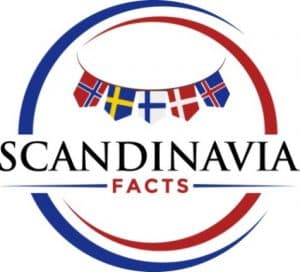No figure is more significant in Norse mythology than the mighty “all-father” Odin.
From creating the earthly realm in which the Vikings lived to hand-selecting fallen warriors to join him in the halls of Valhalla, Odin represents many things to the Norse people.
So determined was Odin to gain knowledge that he was willing to make a great sacrifice to get it.
Although he is recognized for many feats and accomplishments, Odin’s name is synonymous with profound learning and unparalleled wisdom.
As Norse mythology demonstrates, Odin’s next-level intellect did not come easily. It was only through great sacrifice that these attributes were earned.
Also, see Norse Mythology vs. Greek Mythology: What’s the Difference? to learn more.
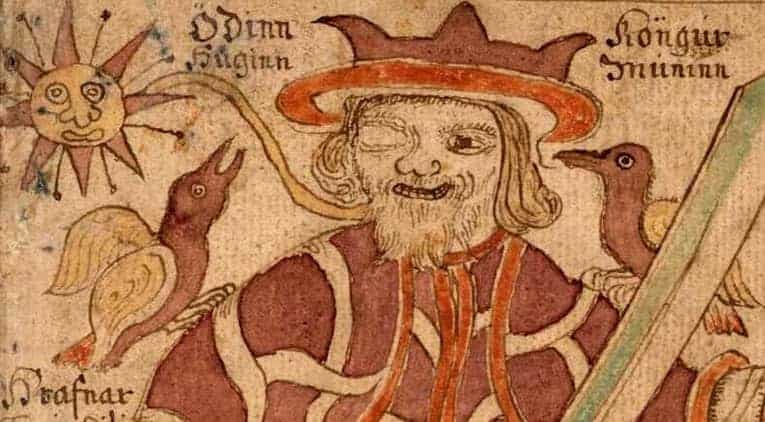
The Mystery of Odin’s Missing Eye
While specific accounts may differ due to variations in translation and interpretation, the core elements of the story about how Odin lost his eye remain consistent.
Although Odin was widely regarded as one of the wisest gods, Mimir was often considered his equal or even superior in intellectual and spiritual realms.
Odin became aware that Mimir regularly drank water from a well-known as Mímisbrunnr (“Mimir’s Well”) and that these magical waters gave him an incredible depth of knowledge.
How did Odin lose his eye?
When Odin requested permission to drink from the well, Mimir said there would be a steep price.
In exchange for a guzzle of water from Mimisbrunnr, Odin had to sacrifice an eye.
The all-father agreed and gouged one of his eyes out of its socket and tossed it into the depths of the well’s waters as demanded.
Mimir then drew a drinking horn full of the mystical waters, which Odin quaffed down eagerly. Then, he awaited the infusion of knowledge that would make him the wisest among all Norse gods. [1]
Also, see Who Can Lift Thor’s Hammer? The Secrets of the Mjolnir to learn more.
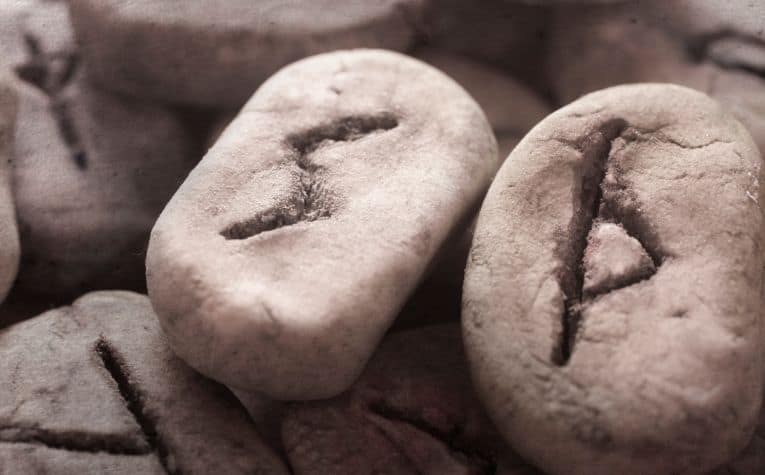
Which Eye Did Odin Sacrifice?
There’s no consensus regarding which eye Odin sacrificed to drink from Mimir’s well due to the lack of a definitive source to settle the question.
In various notable artworks, including those displayed in Scandinavian museums, Odin is often depicted with his left eye missing. [2]
Other sources, however, refer to or depict Odin’s missing right eye.
One particularly well-known drawing of Odin clearly shows him with a missing right eye, while others depict Odin wearing an eye patch over his right eye. [3]
Regardless of which eye Odin sacrificed, the message behind the act is undiminished.
What did Odin gain by sacrificing his eye?
Odin’s quest to drink from Mimir’s well wasn’t for academic knowledge; instead, he sought spiritual enlightenment.
By sacrificing his eye, he gained a profound, ethereal understanding that transcended mere facts.
Evidently, after drinking from Mimir’s well, Odin’s intellectual and mental prowess became unparalleled among the gods.
Also, see 25 Norse Gods to Know in Norse Mythology to learn more.
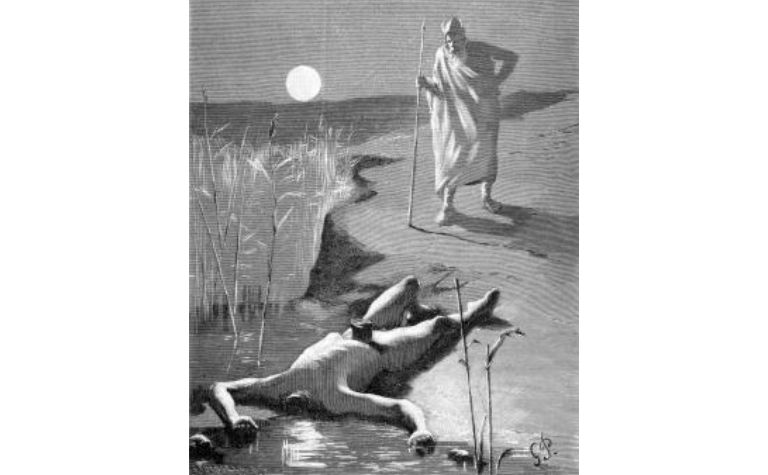
The Well of Urd: A Source of Wisdom
The Well of Urd holds a special place in Norse mythology as a fountain of wisdom and knowledge.
Located beneath the Yggdrasil, the World Tree, this well is guarded by Mimir, a figure renowned for his wisdom.
Odin, in his relentless quest for enlightenment, knew that a drink from this well would grant him unparalleled wisdom.
However, the well wasn’t open to just anyone. Mimir, understanding the value of the wisdom contained within, demanded a high price for a sip.
For Odin, the cost was his eye, a sacrifice he willingly made to achieve a higher understanding of the universe.
The water from the Well of Urd is said to have transformative powers.
It doesn’t offer wisdom in the way a book or a teacher might; instead, it provides a deep, spiritual understanding of life’s complexities.
This is what Odin sought, and this is what he gained—wisdom that transcended mere knowledge, elevating him to a level of understanding unmatched by any other god.
In essence, the Well of Urd serves as a symbol of the ultimate quest for wisdom, a journey that demands sacrifice but offers immeasurable rewards.
It’s a cornerstone of Norse mythology, representing the lengths to which one might go to attain true enlightenment.
Also, see 14 Great Books on Norse Mythology to learn more.
What is the Symbolic Meaning of Odin’s Sacrifice?
The story of Odin’s great sacrifice was a source of inspiration throughout the Viking era, indicating how wisdom and knowledge were viewed within Old Norse society.
Poems and sagas have been written about Odin’s exploits, and for centuries, scholars have analyzed the story of how Odin lost his eye and studied its various meanings.
Through the lens of the Norse people during the Viking era, there are several valuable life lessons to be learned from Odin’s remarkable act:
- The quest for knowledge is a noble pursuit, and even gods (Odin, no less) pursue it to great lengths.
- In a general sense, this story conveys the message that when it comes to matters of higher learning and self-awareness, no sacrifice is too great if true enlightenment is the reward.
- Odin exchanges half of his earthly vision for spiritual and ethereal knowledge, suggesting a distinction between knowledge in the human realm and knowledge in a godly plane.
- The particular knowledge that Odin is said to have gained by sacrificing his eye is a comprehensive understanding of ancestral traditions, ancient histories, and invaluable teachings. [4]
Also, see Is Valhalla Heaven or Hell? to learn more.
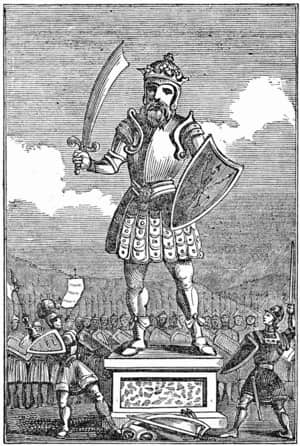
Odin’s Bond with Mimir
As gatekeeper to the well from which Odin gained enlightenment, Mimir is the only figure in Norse mythology whose wisdom and intellect are viewed in the same light as Odin’s.
It can be argued that it was, in some respects, superior, for Viking lore relates how Odin sought counsel and advice from Mimir.
And like so many Old Norse myths, there is tragedy and intrigue in the details.
According to Norse mythology, there were two factions of gods who went to war.
After years of battling each other to a stalemate, the Aesirs (the side of Odin and Mimir) and the Vanirs agreed to put down their arms and exchange hostages as a mutual sign of peace and settlement.
Unfortunately, circumstances led to the Vanirs feeling that they had been betrayed, so they decapitated Mimir as an act of vengeance.
Incredibly, Odin brought the bodiless head back to life and even fully restored Mimir’s ability to think, reason, and speak.
With his wisdom and intellect intact, Mimir provided valuable counsel and companionship to Odin while sharing with the Norse all-father his seemingly infinite knowledge of their Viking ancestors’ traditional ways.
Through a deeper understanding of the Norse concept of cosmic apocalypse and rebirth, Odin accepted his preordained fate in the aftermath of Ragnarok (the Norse version of the end of days) due in large part to Mimir’s sage guidance.
Do people still believe in Odin? See Is the Norse Religion Still Practiced? to learn more.
Modern Interpretations and Cultural Impact
The tale of Odin sacrificing his eye for wisdom has not only endured through the ages but has also found new life in modern interpretations.
Today, the story is often cited in literature, movies, and even video games, serving as a powerful narrative about the pursuit of knowledge at any cost.
In popular culture, Odin is frequently depicted as a one-eyed god, a visual cue that instantly connects him to his legendary sacrifice.
This portrayal has made its way into blockbuster movies and TV series, where the complexity and depth of Odin’s character are explored, often with a focus on his quest for wisdom.
The story has also found resonance in educational settings.
Teachers and scholars alike use it as a metaphor to discuss the importance of sacrifice and dedication in the pursuit of knowledge.
It serves as a compelling example to inspire students to commit to their studies, emphasizing that great rewards often require great sacrifices.
Moreover, the tale has had an impact on modern spirituality and philosophy.
Various self-help books and spiritual guides refer to Odin’s sacrifice as an example of the lengths one might go to achieve enlightenment.
It’s cited in discussions about the balance between sacrifice and reward, and the ethical dimensions of seeking wisdom at a personal cost.
Also, see Is Norse Mythology Older Than Christianity? to learn more.
Odin Is Still Worshiped to This Day
The Viking Era ended as its people converted to Christianity and adopted Christian beliefs, but there are still those who revere Old Norse gods like Odin in the modern world.
There are pockets of followers of “the old way” (Forn Sidr) sprinkled throughout Scandinavia.
Even one group of around 600 is recognized as an official Nordic religious society by the Danish government.
Indeed, the Asatru movement, which is a revival of the worship of Norse gods and goddesses, has seen steady growth in recent years.
Aside from Norway and Sweden, it has gained popularity in Iceland.
Several thousand Icelanders consider themselves followers of what may very well be Iceland’s largest non-Christian church.
Though he may not be worshiped with the same fervor as he was centuries ago, one-eyed Odin is still perceived as a symbol of wisdom and a champion for the pursuit of knowledge.
Those who study the old myths about Odin do so not to join him in the halls of Valhalla or to learn the secrets of ancient runes but rather to gain a deeper appreciation for self-enlightenment.
What did the Vikings use to fight? See What Weapons Did the Vikings Use? The Top 5 to learn more
References:
[1] Odin – Wikipedia
[2] Odin – Mythopedia
[3] Asatru – Washington Post
